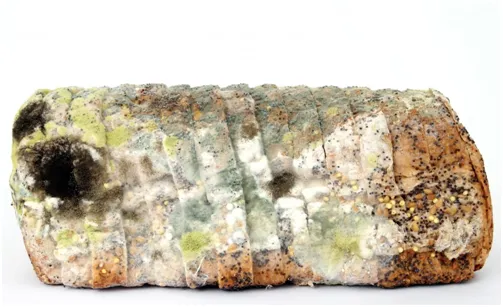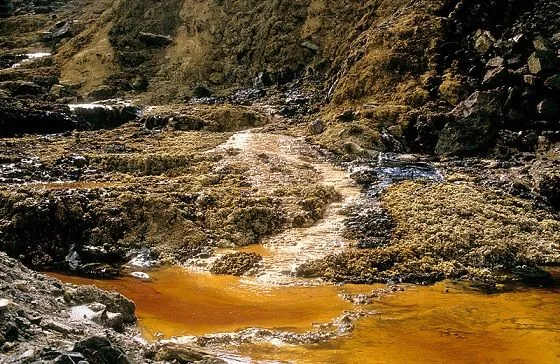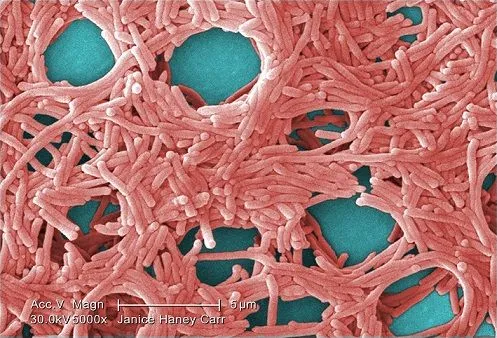
Nathan, a three years old boy went to school like every normal student but on this day which was his seventh day in school, he was feeling very weak as a result of the common cold he suffered from the previous night. His mum who has been caring and loving rather than take care of him decided to send him to school because she had to be in her office for reasons best known to her. “This life na wa oh, everyday work don make this woman leave her child all because of money”, anyway let’s forget about that and go back to the story.
At about noon, Nathan began to have stomach upset and he needed to visit the toilet but he was too scared to tell his teacher because he has not really gotten along with her. Because he was not ready to talk to her, he released the stool in the class and messed up his surroundings. Hmm…., what do you think could have happened to him.
Rather than take care of him, the teacher decided to flog him first and then handed him over to the cleaner to take care of him. The cleaner cleaned him up but she forgot to wash his hands. Did I say forgot? Anyway, I can’t really say what happened but from the investigation carried out by Nathan’s mum, the cleaner said she forgot to clean his hands.
On arrival to the house, Nathan narrated his ordeal to his mum but she didn’t take him seriously. The next day, he developed diarrhea, it became more severe after 24 hours and after much effort to stop it, the diarrhea continued for three days. She visited the clinic and the doctor confirmed that the diarrhea was as a result of an infection. Although, Nathan was treated and he became healthy again, his mum was not happy about having to leave her job in other to take care of him.

Nathan’s mum visited me and during our discussion, I found out that all she seems to understand is that microorganisms are harmful and should be avoided religiously. Although I tried to explain to her that the microbes were responsible for infection but they also have beneficial effect, she was not ready to listen to my views.
I decided to write on microorganisms in other to enlighten the public more because I also found out that even most students of microbiology thinks that their course of study only relates to microorganisms and the hospital setting. Only recently my students defended their industrial training activity and about 90% of them got placement in the hospitals, not because that was the only option but because they see microbiology as a second choice to medicine.
What are microorganisms?
Microorganisms are organisms or agents that cannot be seen with the naked eye. They include the bacteria, fungi, Protozoa, viruses and many algae. However, some of the algae and fungi are larger and quite visible.
Although microorganisms cause disease, only about 20% are estimated to be pathogens the remaining 80% are known to be beneficial to man. Apart from causing diseases, bacteria and fungi are common causes of malodour in the armpits, home textiles, footwear and in our clothing. These organisms also contaminate food and water, resulting to food spoilage and poisoning.

They are part of our everyday life as they live in association with human hosts as the normal flora on the different part of the body e.g Bifidobacterium Staphylococci, Corynebacteria, and Lactobacillus, are known to protect their hosts from infections. Did you see that? They also protect us from infection. The knowledge of the normal flora helps the investigator to understand the consequences of growth and colonization by microbial community normally absent at specific body sites.
The effect of these bugs cannot be overemphasized and this is why I will be writing on the benefit of microbes to man in the following industries:
The Pharmaceutical and Medical Industry
Microorganisms are useful in the pharma industry as they are used in the production of vitamins e.g Streptomyces olivaceus and Bacillus megatherium is useful for the commercial production of Vitamin B12 or cobalamin while Closteridium bytyricum Eremothecium ashbyii and Ashbya gossypii are used in the production of vitamin B(Riboflavin).
These bugs are also useful in the production of antibiotics which is used in the treatment of infections caused by pathogens. Most antibiotics are produced from species of Streptomyces (the aminoglycosides, cephalosporins etc) and some others from the fungi such as Penicillium. These antibiotics produced can also be used to keep our plants away from pathogens as Griseofulvin can be used for pest control.
They are useful for the production of vaccine that used to combat and limit the spread of diseases through vaccination and immunization, this achieved by inducing an immune response.
Microorganisms have helped in understanding the function of genes, an example is the synthesis of the Taq polymerase enzymes from Thermus acquaticus. This enzyme is necessary for the polymerase chain reaction, a reaction that is used to make many copies of a specific DNA region in vitro.
The species of Aspergillus, Streptomyces, Actinomycetes, and Gliocladium are used to produce various types of steroids by a combination of chemical and microbial methods from the progesterone. These steroids are useful for family planning.
The Food Industry
For the production of food Yeast that usually taken as a food supplement.
They are useful in the production of bread. During the process of baking bread, the dough is usually mixed with selected strains of Saccharomyces cerevisiae resulting in the leavening of the dough. This act usually gives the bread the desired texture and taste.
Beer, Wine, and Rum are manufactured through the enzymatic activities of Aspergillus oryzae, Saccharomyces ellipsoideus and Saccharomyces cerevisiae respectively.
Products such as butter, milk, cheese, and yogurt are made from the fermentation of milk by lactic acid bacteria, such as Streptococcus lactis, S. cremoris, Leuconostoc citrivorum, L. dextranum, Streptococcus lactis, S. cremoris, Leuconostoc citrivorum, Bifidobacteria etc.
I know you love the yummy taste of these products. Please thumbs up for these important organisms.
In the Agricultural and Environmental Industry

They are useful in decomposing dead plants, animals and also in municipal waste treatment.
The aquatic environments can be enriched with nitrogen through nitrogen fixation by cyanobacteria. Nitrogen fixation can occur through the activities of bacteria that develop a symbiotic association with plants and these include the association Rhizobium and Bradyrhizobium with legumes, Anabaena with Azolla a water fern important in rice cultivation.
They are also beneficial in increasing the fertility of soil. Interestingly, the Rhizobium also assist in fixing atmospheric nitrogen in the root nodules of plants that are Leguminous.
The bacterium Bacillus thuringiensis produces a toxin that is specific and effective at killing the certain types of insect and in so many years it has been used as an insecticide.
Sewage treatment plants use microorganisms to also convert nitrate in the wastewater to nitrogen gas that is lost to the air in a process, called denitrification and this is important because water with a high nitrate content can stimulate large blooms of algae that foul lakes, streams, and rivers. Nitrate can also be transformed to ammonia by a variety of bacteria that includes the Geobacter metallireducens, Desulfovibrio etc

In the Chemical Industry
Some of the common organic acids such as lactic acid, acetic acid, citric acid, gluconic acid etc. and these acids are produced commercially with the help of microorganisms.
Enzymes such as Dextran sucrose (Leuconostoc meseniteroides), Lipase (Candida lipolytica), Amylases (Rhizopus oryzae, Aspergillus niger and Bacillus subtilis), Lactase (Saccharomyces cerevisiae), Penicillinase(Actinomyces candidus) that are useful to man are synthesized by these bugs although they are not commercially important because of the high cost of purification.
In the process of bioremediation of oil contaminated environment, microorganisms transform the hydrocarbon pollutants without the formation of new toxic substances. Organisms that can utilize hydrocarbons includes Pseudomonas aeruginosa, Pseudomonas putida, Coryneobacterium, Serratia marscenes, Norcadia sp e.t.c. These organisms therefore can be degrade hydrocarbons and can be used for the treatment of oil polluted areas, even our own Ogoni river can be treated with microorganisms.
In conclusion, microbial negative effect might be scary but the benefits of these organisms to mankind are unlimited. They are everywhere but pathogens can be avoided especially in children when we take time to observe good personal hygiene.
Thank you for reading, expecting your comments, questions, and upvotes.
References
Ref 1
Ref 2
Ref 3
Ref 4
Ref 5